Dear Steemit Friends:
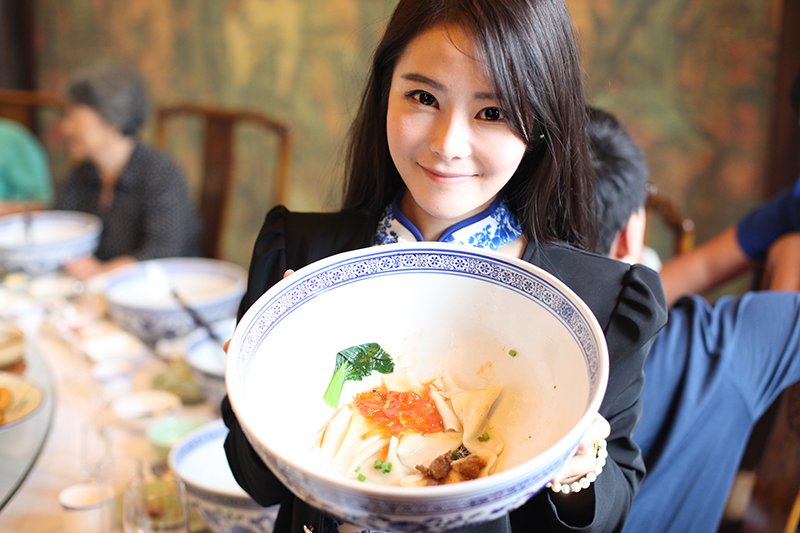
Xi'an is sometimes known as the homeland of noodles. Here, noodles come in all shapes and sizes, flavours and tastes, whether it's spicy, sour, numbing, or fragrant, they all have their own unique taste. It's no wonder that people from Xi'an are particularly fond of noodles, not only that, they pay special attention to how the noodles are prepared and cooked. For example, just one type of noodle may have tens of different ways to cook it.
Today, I'm sharing the most iconic of Xi'an and perhaps China's noodle variety. It's fame is in part due to it's name, but it's also because of it's unique shape and the way it is served. So, how special can a bowl of noodles really be? Well, lets take a look.
As you can see, i'm holding up an absolutely ginormous bowl, and inside, the noodles appear to be very flat and very wide. It is definitely the largest bowl I have seen used to serve just one person.
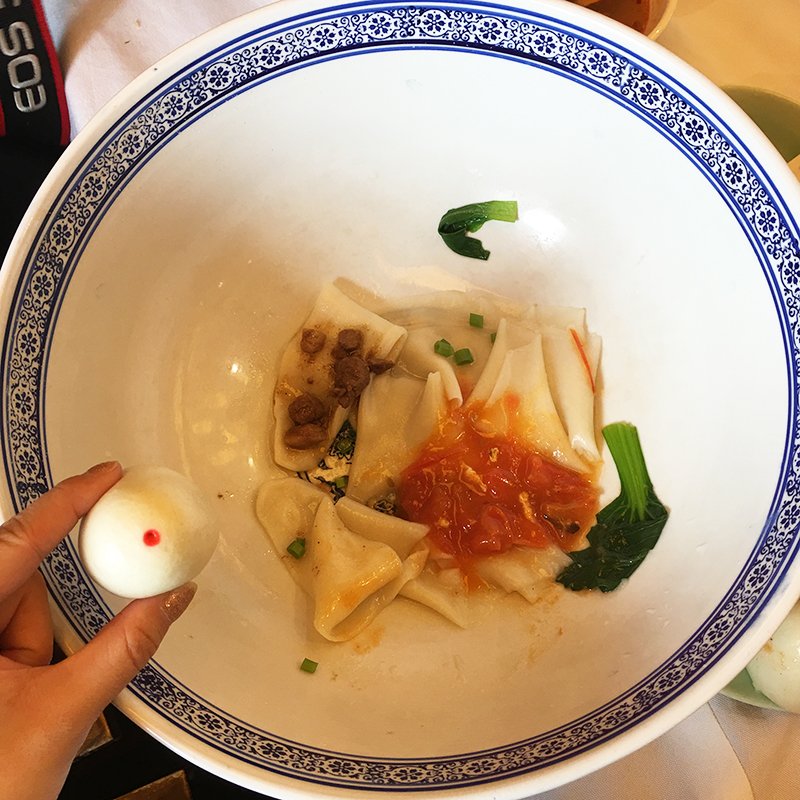
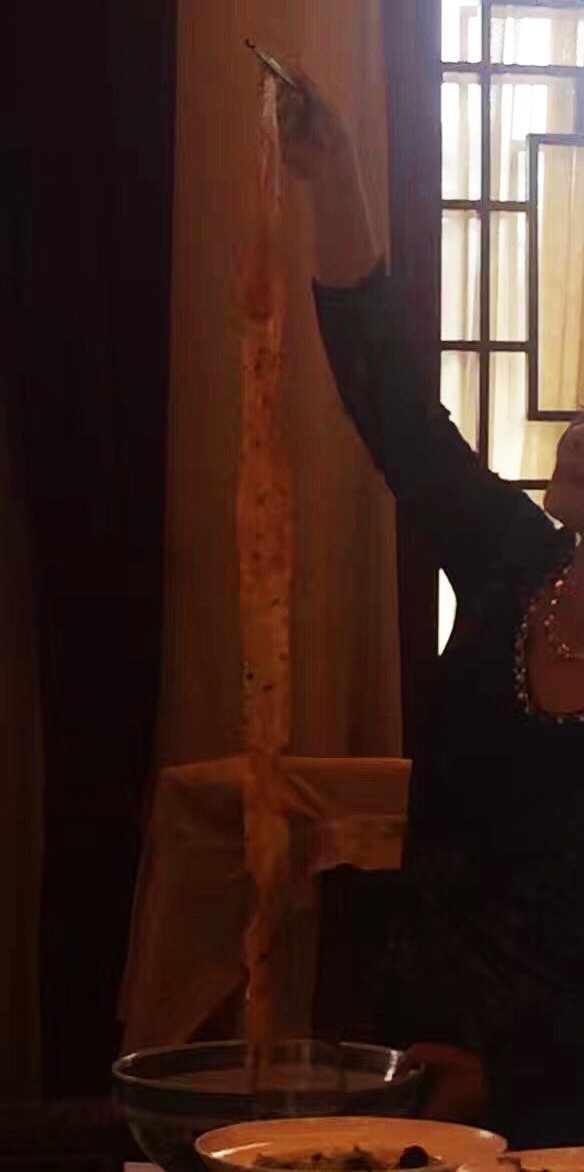
So, here it is, the infamous Xi'an Biangbiang noodle. Some people describe the Biangbiang noodle as being like a belt. Why? Because in this huge bowl, there's actually only one strand of noodle, around 2 feet in length and is about as wide as a trouser belt. When the waitress was serving the noodles to us, she joked about how one strand of the Biangbiang noodle could go round the earth, several times!
Admittedly, it is definitely very long.
Biangbiang is actually an onomatopoeic word. Meaning that the Biangbiang name comes from the sounds associated with how the noodles are made and then consumed. Making the "Biang Biang Biang" sound as people eat these delicious noodles.
In terms of the character, the origins remain unclear. Neither the simplified nor traditional character exists in the official Kangxi Dictionary, nor is it a word in any Chinese input method. So, this is why I have used the romanized pinyin for the character instead.
The character itself is composed of 42 strokes for simplified, and 57 for traditional. Even though it's not an officially recognised character, it still deserves credit for being the most complex one used by a region to describe food. Below, you can see myself next to the Biang character written in traditional Chinese.
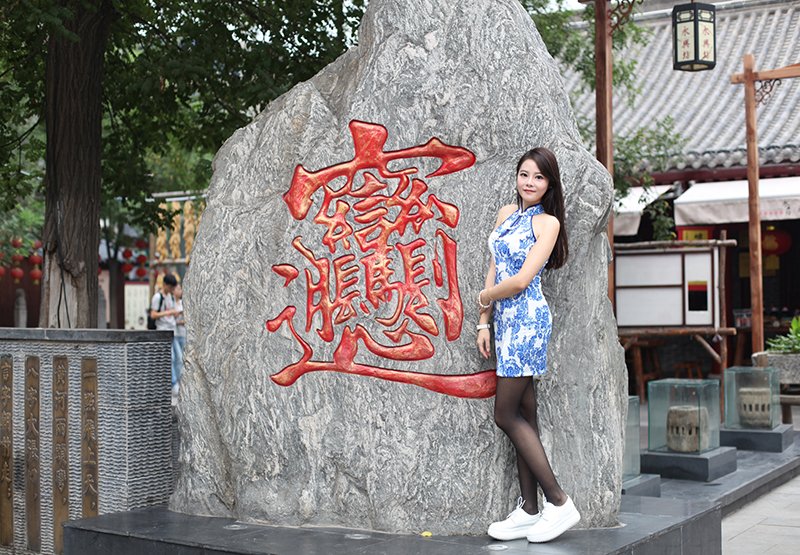
If you take a look at the bowl itself, you will see they have even paid attention to the design of the bowl. One close look and you can see there are various unique looking fish, these actually symbolise a rich bumper harvest.
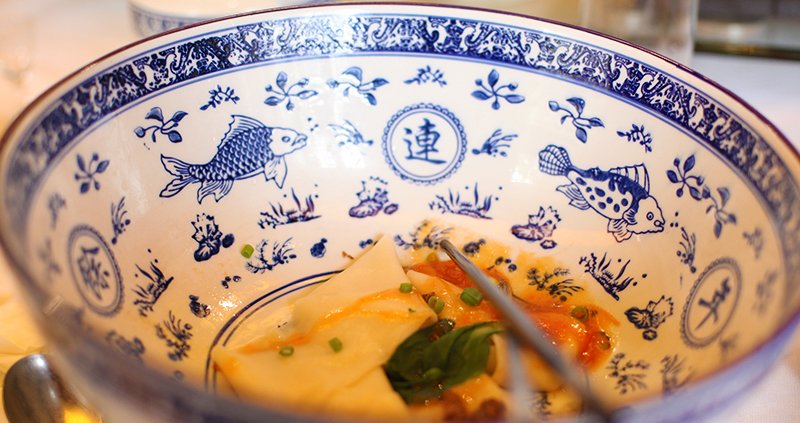
Next, we move onto eating the other dishes. These dishes would all have been consumed in the emperors court. The name of this restaurant however is called The Imperial Kitchen. In the basket below, you can see the steamed rolls as well as the small side dishes to complement them. In the ancient times, the Emperors servants would have carried this basket along with the food to serve the Emperor.
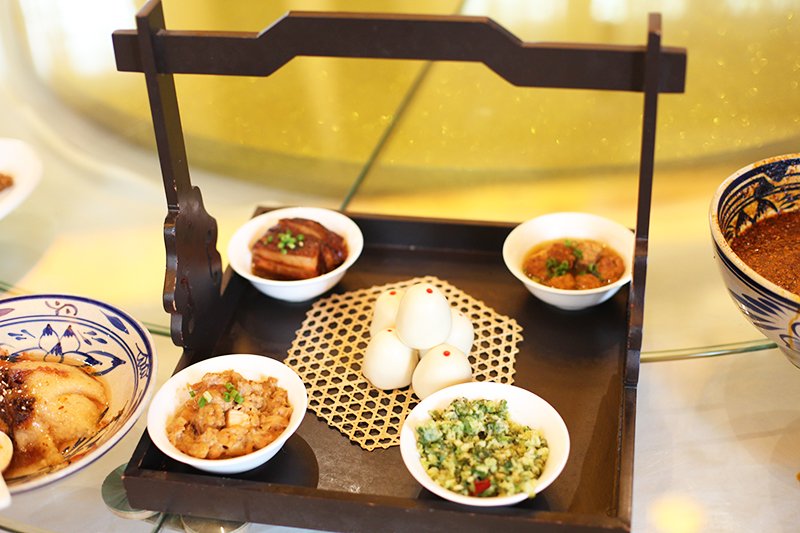
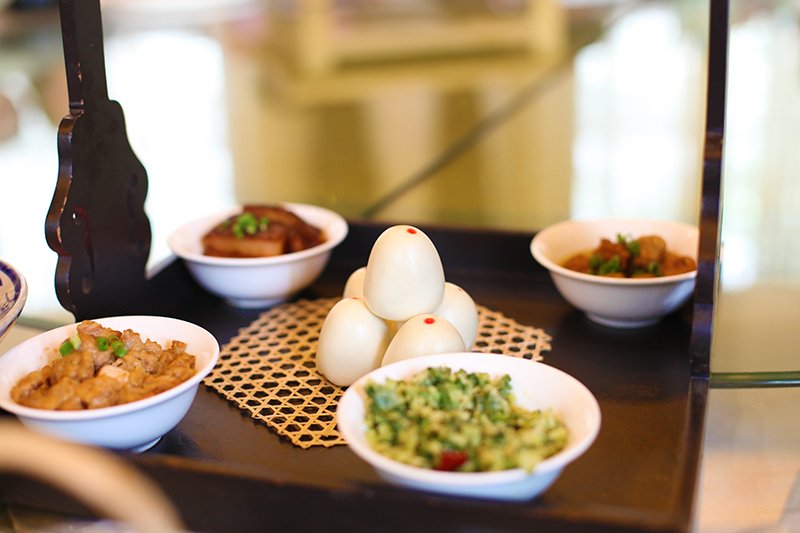
These are bean sprouts mixed with vermicelli. It is usually served cold and has a slightly sour taste. Perfect as an appetizer.
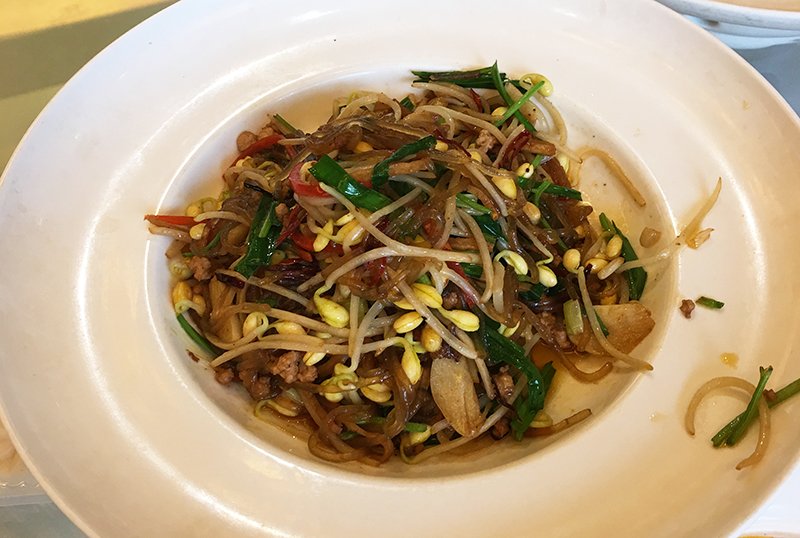
These are very traditional deep fried steamed loaf bread buns. My ancestors from hundreds of years ago would have been eating exactly the same thing.
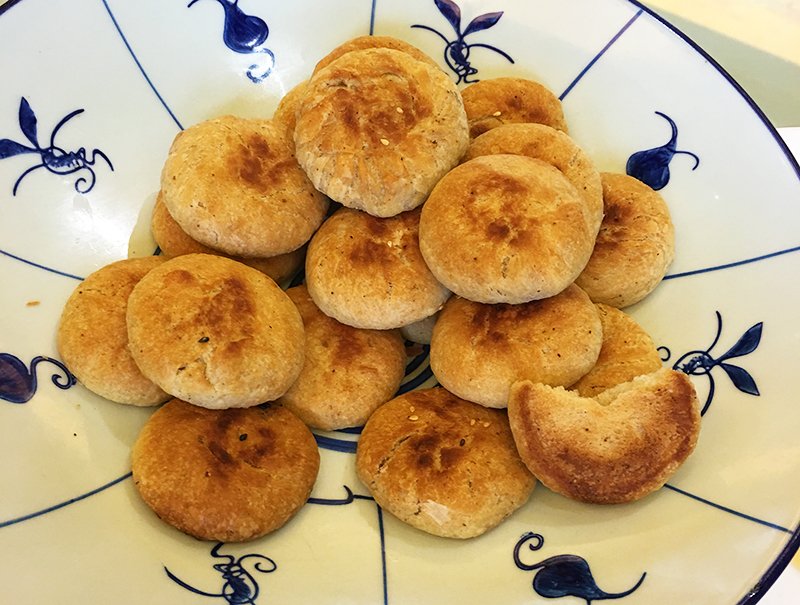
Glutinous eight treasures rice. This made with glutinous rice which is then supplemented with white sugar, lotus seeds, bean paste, candied jujube and raisins. Together, it tastes quite sweet.
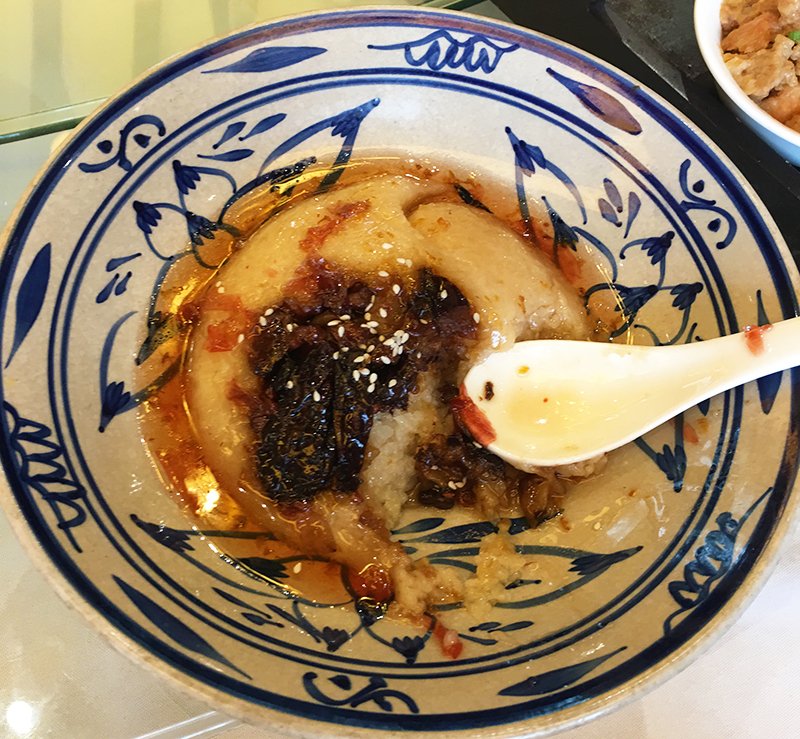
Radish and dried tofu strips are a good combination in this meat stew. I think the colour combination is really good!
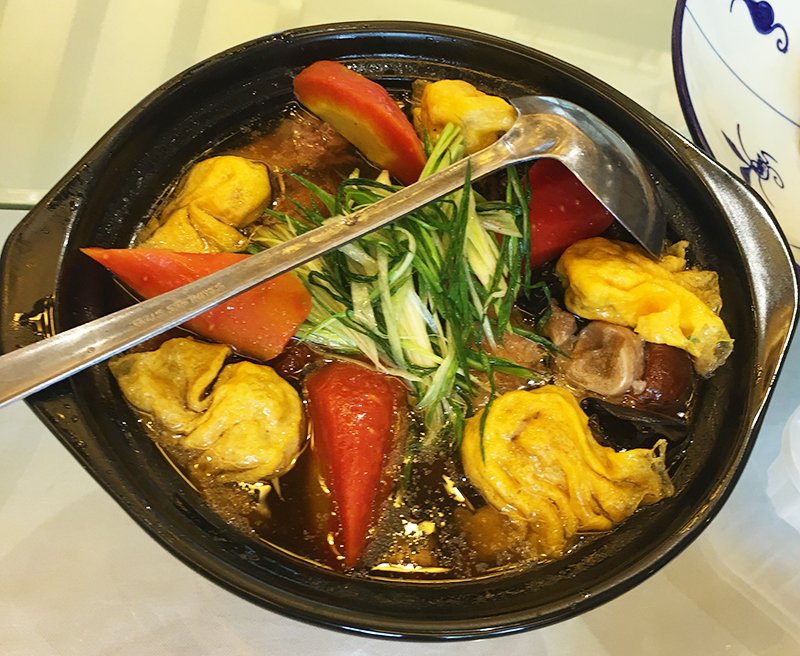
These are some beautifully decorated bean paste buns. They're so cute I almost don't want to eat them.
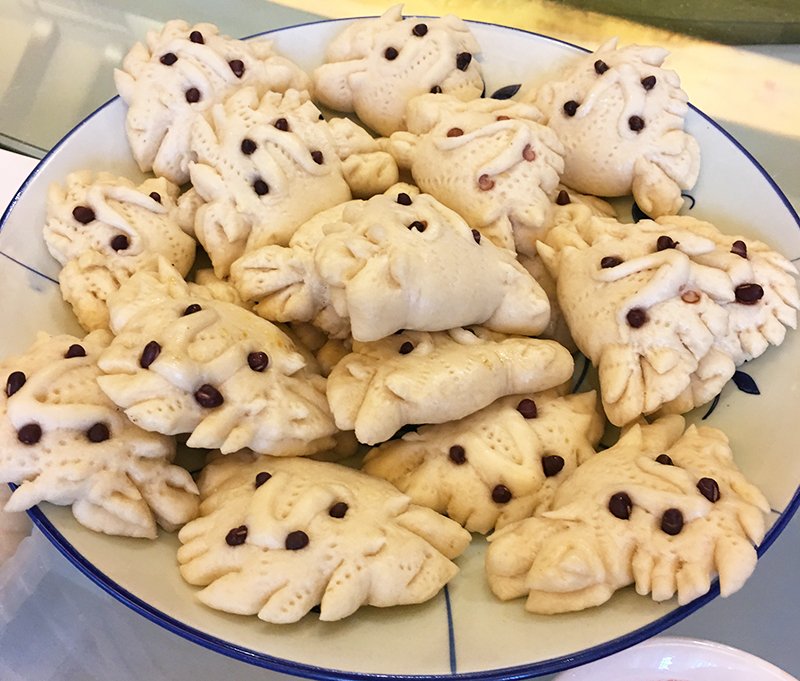
Chicken with chopped onion soup. It tastes a bit sour and the soup is quite thick. Very tasty.
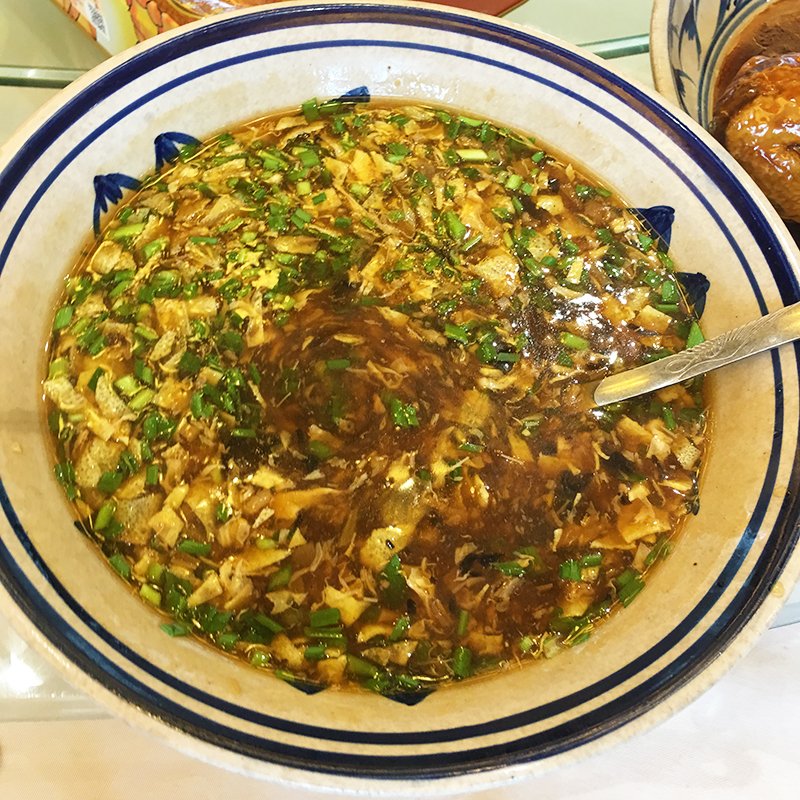
Mini Donuts
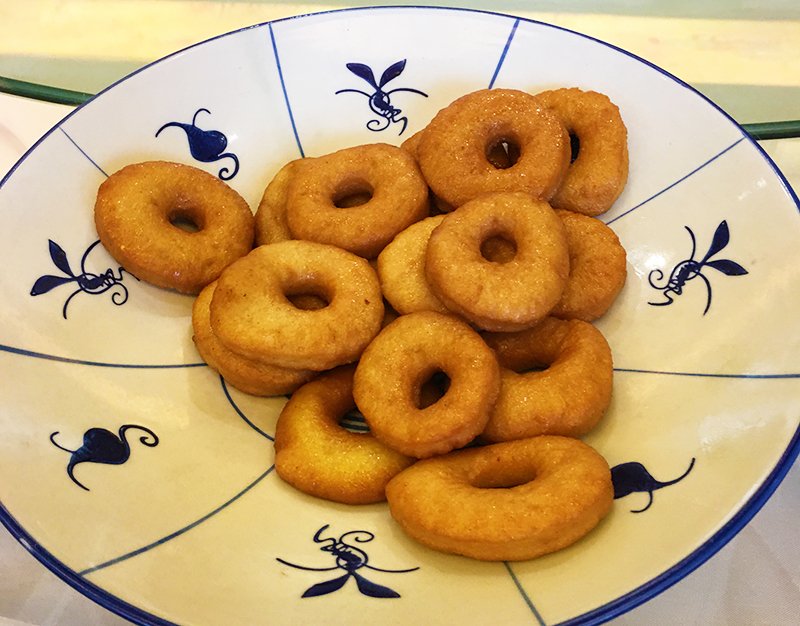
This soup has some vermicelli and steamed loaf bread. It's really filling and quite a challenge to eat after everything we've had already.
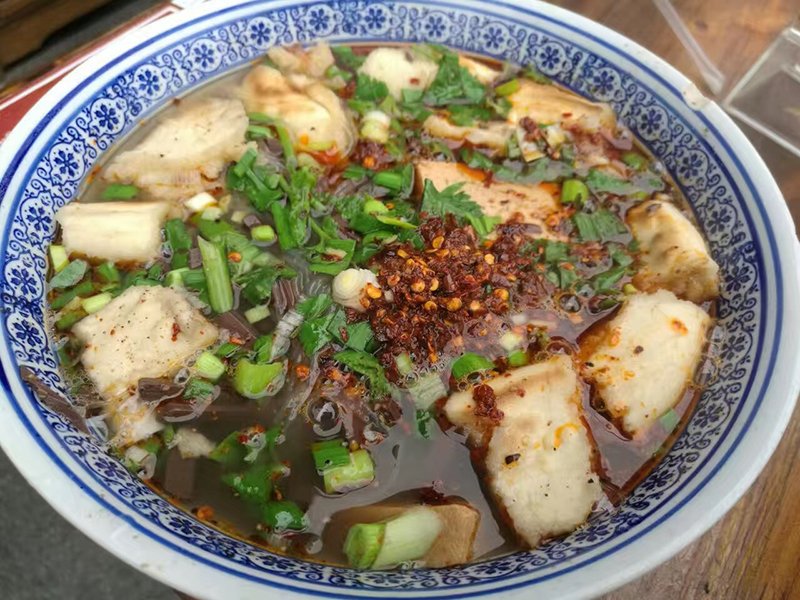
The last course is yet another soup. And probably my favourite. As you can see, the soup mix is very rich, and very healthy.
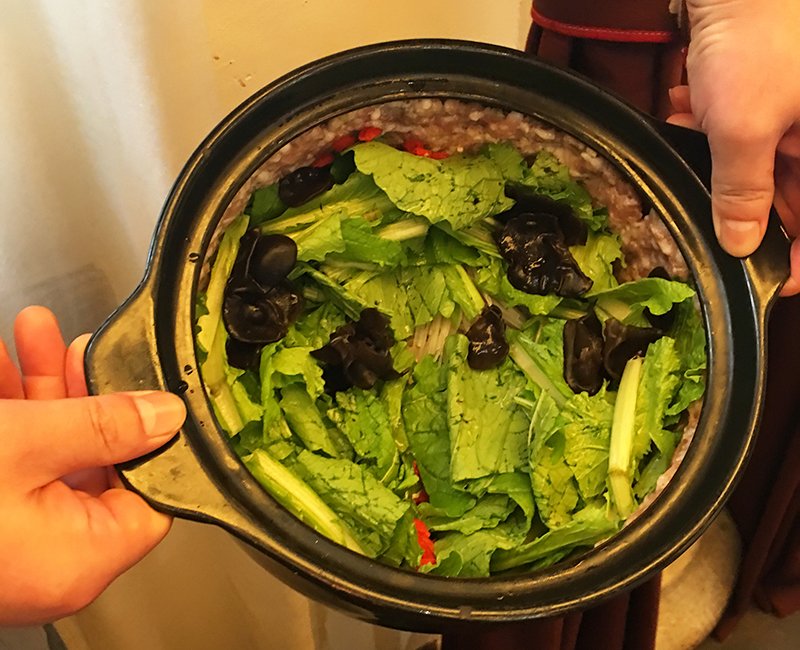
The waiter pushes a strange trolley like contraption into our room. He then proceeds to pour the soup base into the pot. Below are some gif's that show the whole process.
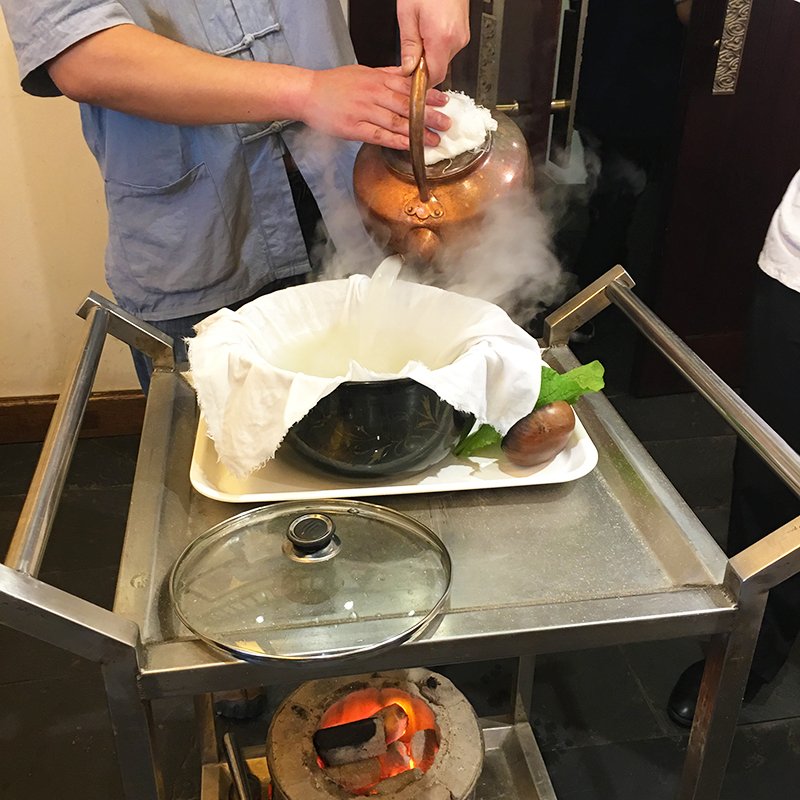
Step 1: The waiter crouches down and picks up one of the burning hot pieces of coal with some metal tongs.
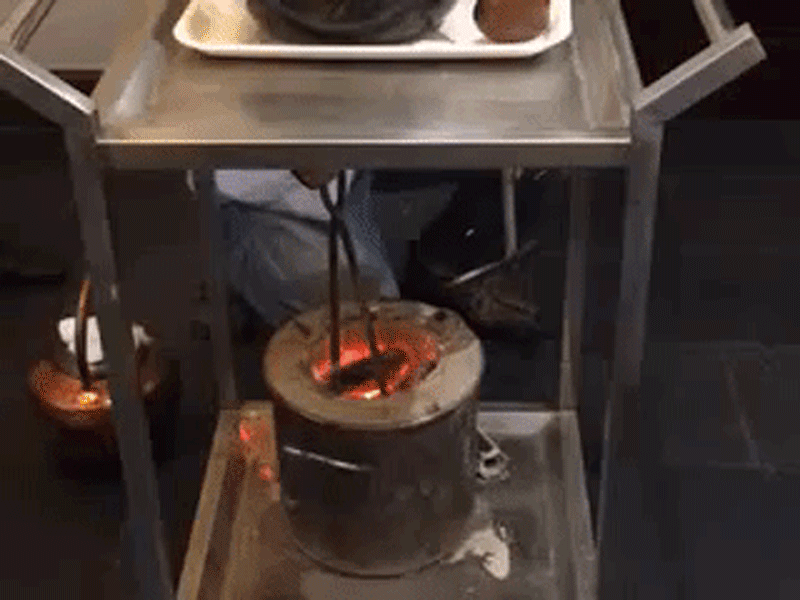
Step 2: Whilst I was still confused as to what he was going to do with the piece of coal, he proceeded to put it into the pot!
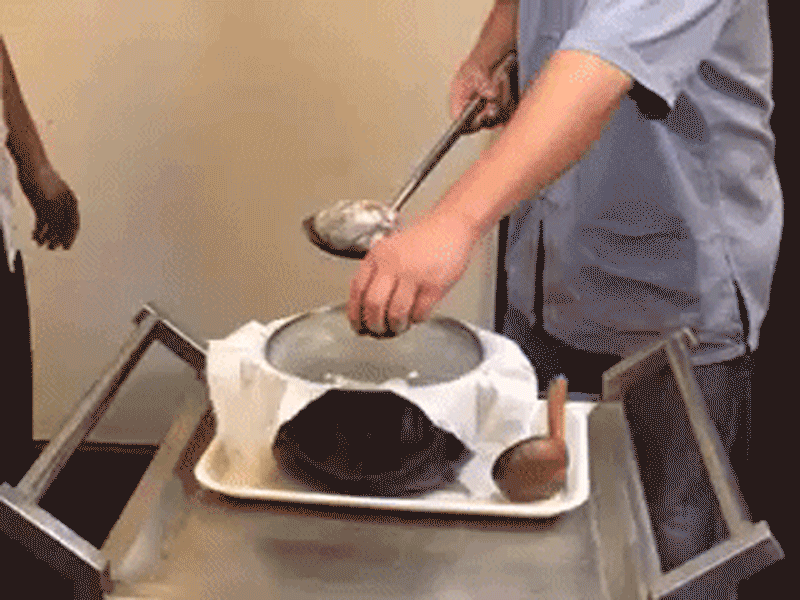
Step 3: The water inside the pot immediately starts to boil, whilst this is happening, the waiter explains the purpose of this process, as well as what the soup is made of. Apparently to retain the taste of the vegetables, you must flash cook them and this is why a piece of red hot coal is used for immediate heat.
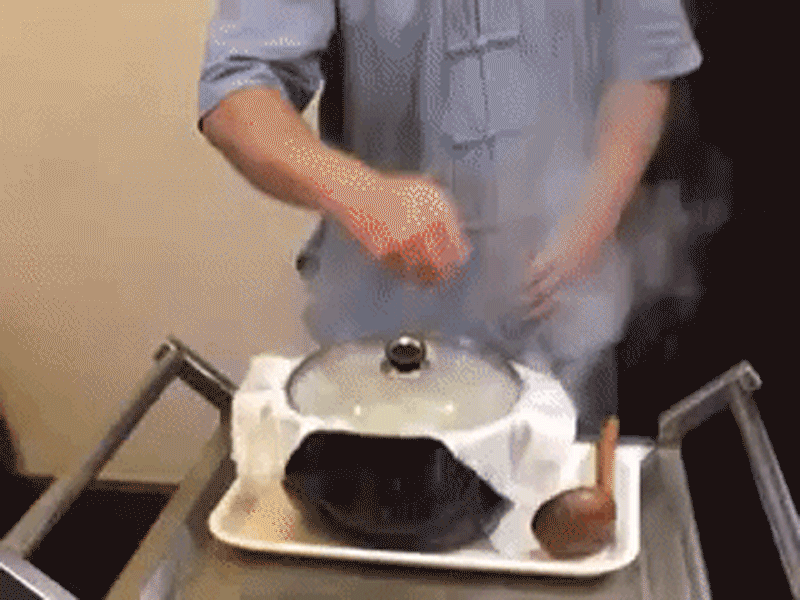
And that wraps up my very filling meal at the Imperial Kitchen! I hope you enjoyed my post! Do you like to try a bit of everything and stop when you're full? Or would you insist on eating till you're extremely full and your stomach is churning?
西安被称为是面食的故乡,这里的面食小吃有着辣,酸,麻,香的特点,西安人不仅喜欢吃面,更热衷于做面食,同一种面就有几十种不同的做法。今天我要分享给朋友们一种西安最特别的面食。它的特别体现在了它的名字,形状和装它的容器上,现在我们就一起去看一看这一碗面,会有多么特别吧!biangbiang是个拟声词,厨师在面板上擀面,拉制以及下锅和搅拌,并且在吃面的时候会发出biangbiang的响声,因此得名BiangBiang面。这个Biang字没有录入汉字字典,就连中文的输入法里也打不出这个字,所以只能用拼音代替。biang是陕西独有的汉字,分简体和繁体两种写法,简体42笔,繁体56笔。仔细看这个大碗的花纹,也是很有讲究和特色的,上面有形状各异的鱼,象征着丰收,富有。豆芽凉拌粉丝,吃起来酸酸的,很开胃可口。接下来是古代宫廷里御膳房的馒头和配菜。糯米八宝饭,把糯米饭加上白糖, 莲子 ,豆沙,蜜枣和葡萄干,所以吃上去是甜甜的米饭。这是外形做的很漂亮的豆沙包,可爱的我都舍不得吃了。如果吃完了这一碗加了馍的汤,因为再也吃不下其他了。最后这一道菜是我最感兴趣的汤。Step1:服务生蹲下来从火炉里取了一块碳。Step2:正在我思考着他取碳做什么的时候,他把碳放进了锅里。Step3:锅里的水立刻翻滚着,服务生借着汤水翻滚的热闹劲,在为我们介绍这一锅汤的用料。谢谢你们的观看,希望你们喜欢我的文章,当你们吃到很多新奇的食物时,你们会矜持的保持你们吃的刚刚好,还是会忍不住吃很多,撑的胃痛?
